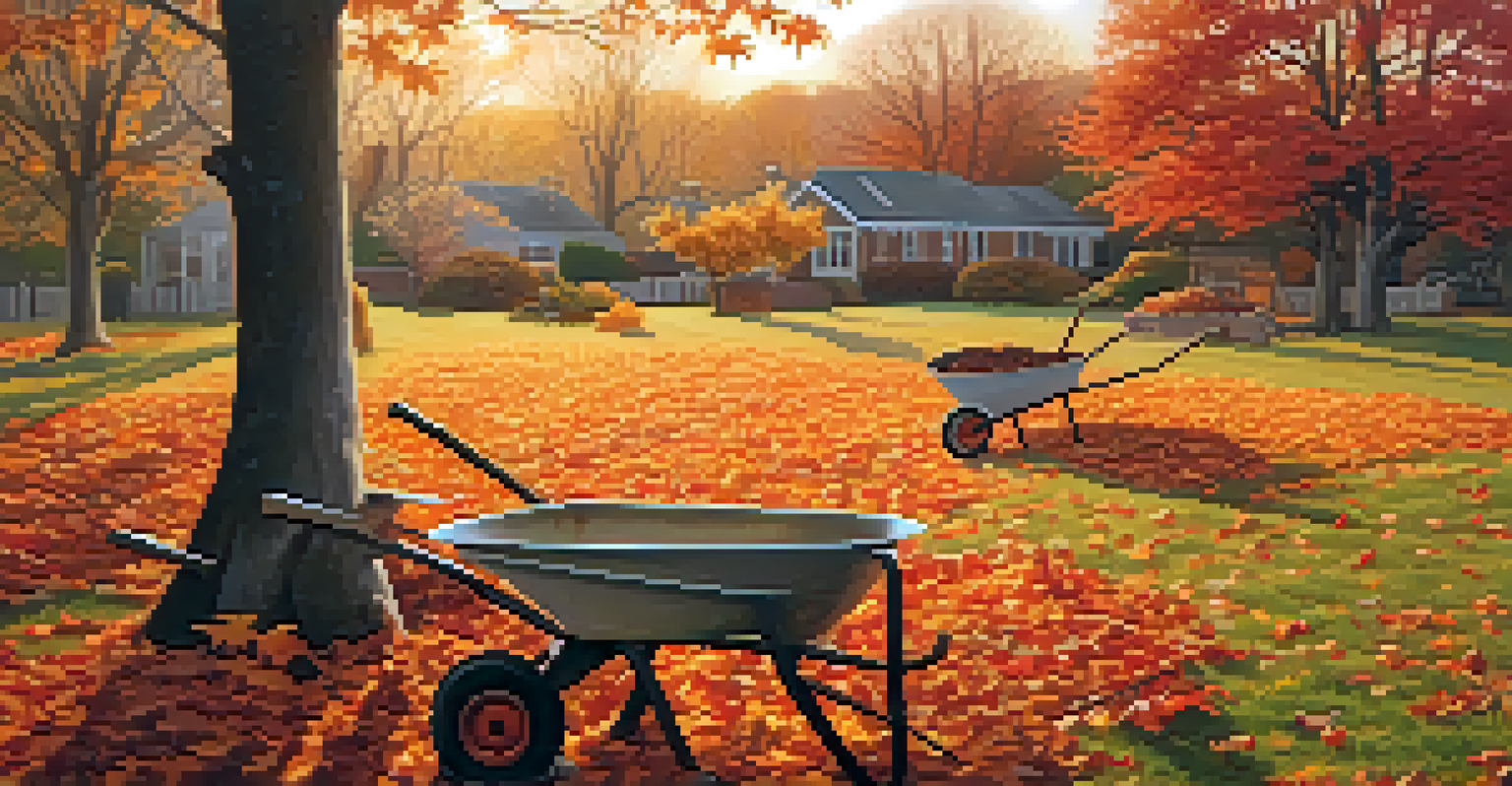Seasonal Fertilizing: Timing Your Plant Nutrition Right

Understanding the Importance of Seasonal Fertilizing
Just like we need the right nutrients at different times of the year, so do our plants. Seasonal fertilizing is crucial because it aligns with the natural growth cycles of plants. By providing nutrients at the right time, you can enhance growth, flowering, and fruiting, ensuring your plants thrive throughout the year.
The best time to plant a tree was twenty years ago. The second best time is now.
Imagine trying to grow a garden without considering the weather; it would be a challenge, right? Similarly, ignoring seasonal needs can lead to nutrient deficiencies or excesses. This imbalance not only stunts growth but can also lead to disease, making your garden less resilient.
So, understanding the timing of fertilization is like having a roadmap for your plants' health. By knowing when to feed them, you’re setting them up for success, just as a good diet sets us up for our best selves.
Spring: The Season for Awakening
Spring is an exciting time in the garden when plants begin to wake up from their winter slumber. As the soil warms, this is the perfect moment to start fertilizing. During this season, your plants are actively growing, and their nutrient needs spike to support new leaves and blooms.

Using a balanced fertilizer rich in nitrogen can give your plants the boost they need. Think of it like a hearty breakfast that fuels your day; your plants need that initial burst of energy to get going. Organic options, such as compost or well-rotted manure, can also provide a slow release of nutrients.
Fertilizing Aligns with Growth Cycles
Seasonal fertilizing is crucial as it corresponds with the natural growth cycles of plants, enhancing their health and productivity.
Timing is crucial, so aim to fertilize in early spring, just as new growth begins. This way, your plants can absorb the nutrients effectively and set the stage for a vibrant growing season ahead.
Summer: Nourishing Growth and Blooms
As summer rolls in, your garden is likely in full swing with growth and flowering. This is a critical time for fertilization, as plants are using up their nutrients quickly. Regular feeding during this season helps ensure that they have everything they need to thrive under the sun's strong rays.
To plant a garden is to believe in tomorrow.
Consider using a fertilizer higher in potassium and phosphorus, which support flowering and fruiting. It’s like giving your plants a little extra energy drink to power through the heat and produce beautiful blooms or bountiful fruits.
Be mindful not to over-fertilize, as this can lead to nutrient burn, which is detrimental to plant health. Instead, opt for smaller, more frequent doses to keep the nutrients available and your plants happy.
Fall: Preparing for Dormancy
Fall is a time of transition, and while many plants begin to slow down, they still require care. Fertilizing in the early fall can help strengthen roots and prepare plants for winter dormancy. This is particularly important for perennials and trees, which need to store energy for the colder months.
A fertilizer higher in potassium can be beneficial during this stage because it helps plants withstand cold temperatures and diseases. It’s akin to bundling up in a warm coat before heading out into the chill; your plants need that extra layer of protection.
Different Nutrient Needs by Season
Each season brings unique nutrient requirements for plants, from nitrogen in spring to potassium in fall, ensuring they thrive year-round.
Aim to fertilize before the first frost hits, so your plants can absorb nutrients and build resilience for the winter ahead.
Winter: The Time for Rest
In winter, many plants enter a period of dormancy, which means their nutrient needs are significantly reduced. This is typically not the time for fertilization, as plants are not actively growing. However, there are exceptions, particularly for indoor plants or certain winter vegetables.
For those indoor plants, a diluted liquid fertilizer can be used sparingly. Think of it as a light snack rather than a full meal; just enough to keep them healthy without overwhelming them. Over-fertilizing during this season can lead to salt buildup and root damage.
So, while it may seem like your garden is resting, it’s important to maintain a careful watch. This way, you can ensure that when spring arrives, your plants are ready to burst back to life.
Signs Your Plants Need Fertilizer
Sometimes, plants can’t voice their needs, so it's up to us to observe the signs. Yellowing leaves, stunted growth, or poor flowering can all indicate that your plants are craving nutrients. Just like we can feel sluggish when we skip meals, plants can suffer when they lack essential food.
Monitoring these signs regularly can help you take action before problems escalate. For instance, if your tomato plants are not producing fruit as expected, it might be time to check their nutrient levels. Adjusting your fertilizing schedule based on these observations can lead to healthier, more productive plants.
Signs Indicate Nutrient Deficiencies
Observing signs like yellowing leaves or stunted growth can help gardeners identify when plants need additional nutrients.
Remember, each plant species has its own specific needs, so doing a bit of research can pay off. By understanding what your plants are telling you, you can provide the right care at the right time.
Choosing the Right Fertilizer for Your Plants
With so many fertilizers available, choosing the right one can feel overwhelming. It's essential to consider the specific needs of your plants and the nutrient composition of the fertilizer. Most fertilizers display a series of three numbers on the package, which represent the nitrogen, phosphorus, and potassium (N-P-K) ratio.
For example, a fertilizer labeled 10-20-10 has a higher concentration of phosphorus, which is excellent for flowering plants. Choosing the right type is similar to selecting the perfect recipe for a dish; the right ingredients make all the difference in the final result.

Don’t forget about organic options, which can be gentler on your plants and the environment. Assessing your soil health through testing can also guide your fertilizer choices, ensuring you provide exactly what your garden needs.
Tips for Effective Seasonal Fertilizing
To make the most of your seasonal fertilizing efforts, consider a few key tips. First, always water your plants before applying fertilizer to help prevent root burn and ensure better nutrient absorption. It's like hydrating before a workout; it prepares your body—or in this case, your plants—for what's to come.
Second, timing your fertilization with the weather can maximize effectiveness. For instance, applying fertilizer before rain can help nutrients soak into the soil more efficiently. Observing the local weather patterns can become an invaluable part of your gardening routine.
Lastly, keep a gardening journal to track your fertilizing schedule, plant responses, and any adjustments you make. This will help you refine your approach and become a more intuitive gardener over time, helping your plants thrive season after season.